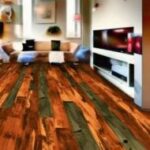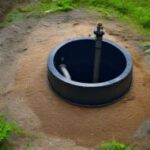-
Recent Posts
-

How to Refinish Your Wood Floors and Give Your Home a New Look
April 03, 2023 By admin -

Why Septic Tank Riser Is A Worthy Idea For Your Septic System?
March 21, 2023 By admin -

The Top Ten Benefits of Hiring a Furniture Removal Service
March 02, 2023 By admin -

Benefits of Switching from Natural Grass to Fake Grass
February 25, 2023 By admin
-
Myth Vs Truth About Septic Tank Maintenance
Taking adequate steps to maintain and take care of your septic system can ensure its longevity and efficiency. However, most homeowners have little idea about their septic tank. All they know is that it is a tank where their wastewater and sewage go. This has led to confusion amongst homeowners.
Being aware of facts about your septic tank maintenance near me can help you have a well-functioning sewer system for years. However, due to the limited knowledge on the subject, there are numerous myths that homeowners fall prey to.
Let’s discuss these myths and the truth behind them.
Myth 1: Delaying septic tank pumping and maintenance can help you save money.
Many homeowners believe that they can delay the regular pumping and inspection to save some money. They only call for a maintenance professional when they need to get their septic system repaired.
However, this is when the damage is already done. Delaying septic tank plumbing can cause sewage blockage, damage the septic system and even your property.
A tank should be pumped every three to five years, and you should call for septic tank maintenance near you for regular inspection of all parts of the septic system. Septic repairs or replacement can cost thousands of dollars which you can easily avoid by regular pumping and maintenance.
Myth 2: Garbage disposal can be used in a home with a septic tank.
This myth is a lie spread by the advertisement for garbage disposal companies. Many homeowners get garbage disposal installed in their houses, thinking it won’t affect their septic system.
However, food that is passed through the garbage disposal is undigested and takes longer to break down in the tank. Hence, it increases the solid waste in your septic tank that will need to be pumped out.
Hence, you may not see the disadvantages of using a garbage disposal system directly, but it increases the need for regular cleaning and causes sewage backup, blockage, etc.
Myth 3: You can use additives as a substitute for regular pumping.
A well-balanced septic tank has the right amount of bacteria and does not require additional help. However, numerous anti-bacterial cleaners in the market may kill the bacteria and cause an imbalance.
Bacteria in your tank are required to break down the waste and keep the tank healthy and functional. If you are using such cleaners, you can use additives to restore the healthy balance of bacteria.
In any case, additives should not be seen as a substitute for cleaning. Despite the presence of bacteria, some waste can only be cleaned through pumping.
Myth 4: You need to replace your septic tanks after twenty years.
There is a lot of mystery around the lifespan of a septic tank. However, it is impossible to determine the expected life of your tank.
A well-maintained tank with regular pumping and inspection can last for decades. On average, a tank lasts for twenty years to forty years. Also, reducing the non-disposable solid waste will increase the longevity of your septic tank.
Myth 5: It is okay to have a building over a septic tank or drain field.
Constructing a building over your septic tank or drain field can cause many issues. You need to access your septic tank for regular cleaning and maintenance.
Having a building over the tank will also make the inspection and repairs inconvenient. The emergency repairs can become costly, and to get a better reach, you may need to remove the building altogether.
The drain field needs oxygen to maintain a healthy balance and to treat the wastewater. Hence it is recommended to avoid any construction over the septic system.
Myth 6: Yeast can help your septic tank.
This statement is completely untrue. Yeast contains microorganisms that can grow inside your septic tank. They can increase the solid waste in the system rather than breaking it down. Hence, it is not advisable to flush yeast into your septic tank.
Now that you are well aware of myths about septic tank maintenance, you are better prepared to take care of the septic system and avoid safety and health hazards.
